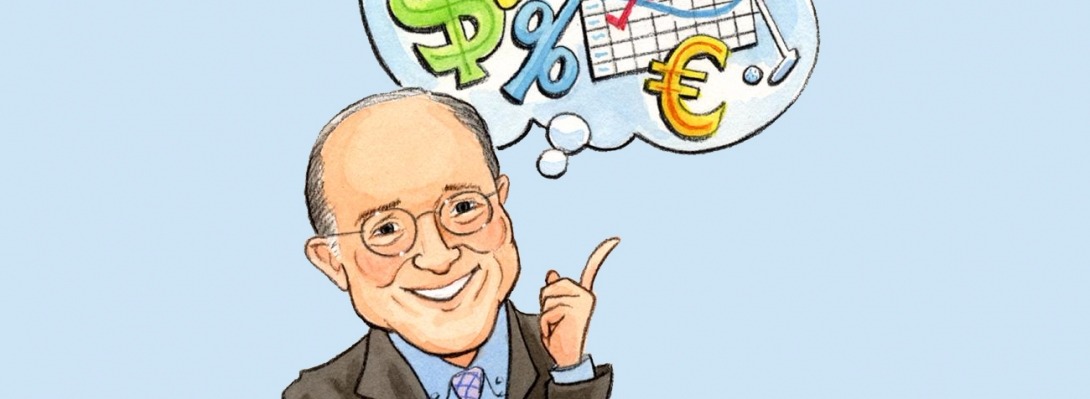|
TWTWTW
Back in the 60’s there was a TV show called “That Was The Week That Was” – well, we have just witnessed a week in the financial and credit markets the likes of which we never want to see again. Although the problems are quite complicated and extensive, I will attempt to list some of them, then recap the key happenings of the last few weeks and months, then summarize the government bailout. Finally I will address “what to do now”.
The problems:
· Our mortgage system evolved into one where almost anyone could get a mortgage with little or no down payment and no documentation (sub-prime loans).
· Wall Street packaged these loans in bundles where there was no transparency (you couldn’t tell the good ones from the bad) and used them as collateral for further investments.
· The real estate bubble burst and people started to default on their loans. Consequently, the dominoes began to fall and real estate values declined precipitously.
· In 2004, the government changed a law which allowed banks and lenders to increase their leverage, which enabled them to borrow even more money.
· Bear Stearns became one of the first casualties but the Fed interceded and loaned money to JP Morgan to enable them to buy Bear Stearns.
· Fannie Mae and Freddie Mac (the two mortgage giants) were in danger of failing so the government stepped in to take them over and loaned them $200 billion.
The week that was – September 15, 2008 through September 21, 2008:
MONDAY
Ø Lehman Brothers files for bankruptcy; Bank of America announces it will buy Merrill Lynch
Ø Dow Jones industrial average falls 504.48 points, or 4.42 percent
TUESDAY
Ø Federal Reserve lends AIG $85 billion in exchange for a nearly 80 percent equity stake, averting bankruptcy by the world’s largest insurance company
Ø The Primary Reserve Fund, hurt by Lehman holdings, becomes the second money market in history to fall below $1 per share
Ø British bank Barclays says it will buy the good parts of Lehman for $1.75 billion
Ø Dow rises 141.51 points, or 1.3 percent
WEDNESDAY
Ø New rule temporarily banning an abusive type of short selling takes effect
Ø Money market funds, facing heavy withdrawals, try to reassure investors; Putnam Investments closes an institutional money fund
Ø Federal Reserve leaves key interest rate unchanged
Ø To bolster the Fed’s balance sheet, the Treasury begins selling $100 billion in short-term bills
Ø Banks worldwide stop lending to each other
Ø Dow falls 449.36 points, or 4.1 percent
THURSDAY
Ø The Fed and other central banks flood money markets with overnight and short-term loans to push down commercial banks’ short-term borrowing costs and encourage lending
Ø Treasury floats plan to create a federal agency to take over bad loans made by financial institutions
Ø Dow gains 410.03 points, or 3.9 percent
FRIDAY
Ø Treasury announces it will buy illiquid mortgage securities from U.S. financial institutions; it will guarantee most money market funds for one year; Fannie Mae and Freddie Mac will double the amount of mortgages it will buy this month to $10 billion
Ø The Securities and Exchange Commission bans short selling entirely in 799 mostly financial companies until October 2, when the rule could be extended for up to 30 days
Ø Dow rises 368.75 points, or 3.4 percent, ending the week off just 0.3 percent
SATURDAY
Ø The Bush administration asks Congress for the power to buy $700 billion in troubled mortgage-related assets.
SUNDAY
Ø Goldman Sachs and Morgan Stanley, the last big independent investment banks on Wall Street, will be transforming transform themselves into bank holding companies subject to far greater regulation, the Federal Reserve said Sunday night. This move fundamentally reshapes an era of high finance that defined the modern Gilded Age.
The firms requested the change themselves, even as Congress and the Bush administration are rushing to pass a $700 billion rescue of financial firms. It was a blunt acknowledgement that their model of finance and investing had become too risky and that they needed the cushion of bank deposits which had kept big commercial banks like Bank of America and JPMorgan Chase relatively safe amid the recent turmoil.
It effectively returns Wall Street to the way it was structured before Congress passed a law during the Great Depression separating investment banking from commercial banking, known as the Glass-Steagall Act.
In exchange for subjecting themselves to more regulation, the companies will have access to the full array of the Federal Reserve’s lending facilities. It should help them avoid the fate of Lehman Brothers.
The Government Bailout Plan (summary)
Treasury Secretary Paulson and Fed Chairman Bernanke have asked Congress to pass legislation to authorize a plan to bail out the U.S. financial system. Details of the plan are still sketchy, but essentially the Treasury department will request the authority to run auctions to borrow hundreds of billions of dollars to be used to buy illiquid assets from U.S. financial institutions. This in turn would shore up firms and make them healthy enough to raise new capital. A new agency will be created similar to the Resolution Trust Corporation used during the Savings & Loan crisis. This bill will be referred to as TARP (Troubled Asset Relief Program).
What do we do now?
Change is a fact of economic life. Flip through a magazine from twenty or thirty years ago and you’ll see the names of many firms once considered mainstays of the American business landscape that are now gone. And many of today’s common everyday brand names are nowhere to be seen – and in many cases had not yet even opened their doors for business.
It is useful to keep in mind that change is, in and of itself, not alarming. But sometimes the pace of change catches us off guard and inspires overreactions. After weeks of speculation, announcements regarding the fate of Lehman Brothers and Merrill Lynch sent the markets into turmoil. Despite the wide anticipation of negative news regarding these two one-time giants, investors across the world are reacting now that anticipation has become reality.
I believe that you already understand the limits of emotional and (especially) fear- based decision making. No one can say what the reshaped Wall Street landscape will look like, but experience tells us that those who remain calm and make rational decisions with an eye on the long term are those who will most likely weather the current uncertainty.
As you consider the news, keep a few things in mind:
· The turmoil engendered by the Merrill Lynch and Lehman announcements is centered on the Financial Sector. Financials have been weak for some time and there had been considerable speculation of further headwinds to come. So while the timing and perhaps the scope of the announcement could not have been anticipated, further bad news was not unexpected.
· A secondary source of weakness is Consumer Discretionary. Since much consumer spending is financed by debt, difficulties in the financial sector are likely to extend this weakness.
· Despite the weakness in these two sectors and across the S&P 500 at large, history shows that the capital markets often respond creatively, finding opportunities in the midst of challenges.
Last Thursday I attended a conference and met with officers and strategists from Goldman Sachs, UBS, and Litman Gregory, among others, as well as 100 other independent investment advisors from around the country. My conclusion is that we are still in for a bumpy ride. The move by the Federal Reserve and the Treasury was needed in order to prevent a collapse of our financial systems. I do not expect an immediate recovery or a fast market upswing (although one firm predicted just that).
As you know, we have had concerns for some time that we are in a secular bear market (a long term period of flat or declining stock prices). We have designed your portfolios with this in mind and have implemented different strategies for portions of your portfolio. This will enable us to weather this storm. If we haven’t met with you in the last few months, our plan is to schedule a meeting or a phone conversation in the near future.
We wish we could assure you that the market will stabilize and never go down again. However, our basic role is to help you attain your lifetime goals. It is still possible to attain your goals even when the market staggers through these declines. We hope we can relieve you of some of the stress during these tumultuous times.
Please call us at anytime to discuss the markets or your portfolio.
Best regards,
Edward J. Kohlhepp, CFP®, ChFC &
Edward J. Kohlhepp, Jr., CFP®, MBA
Kohlhepp Investment Advisors, Ltd.
Certain information included in the above article compiled from The San Francisco Chronicle and The New York Times.
|





